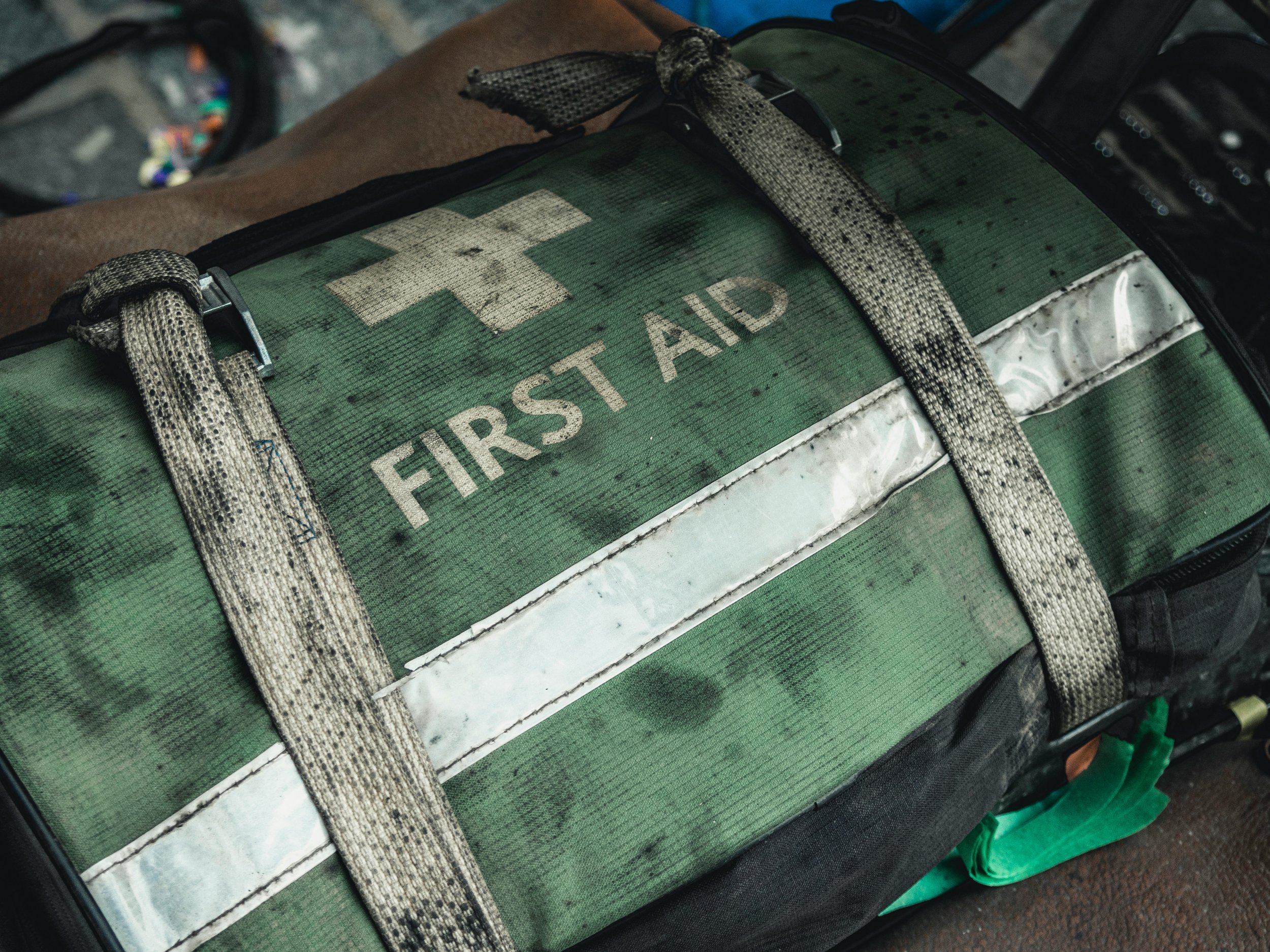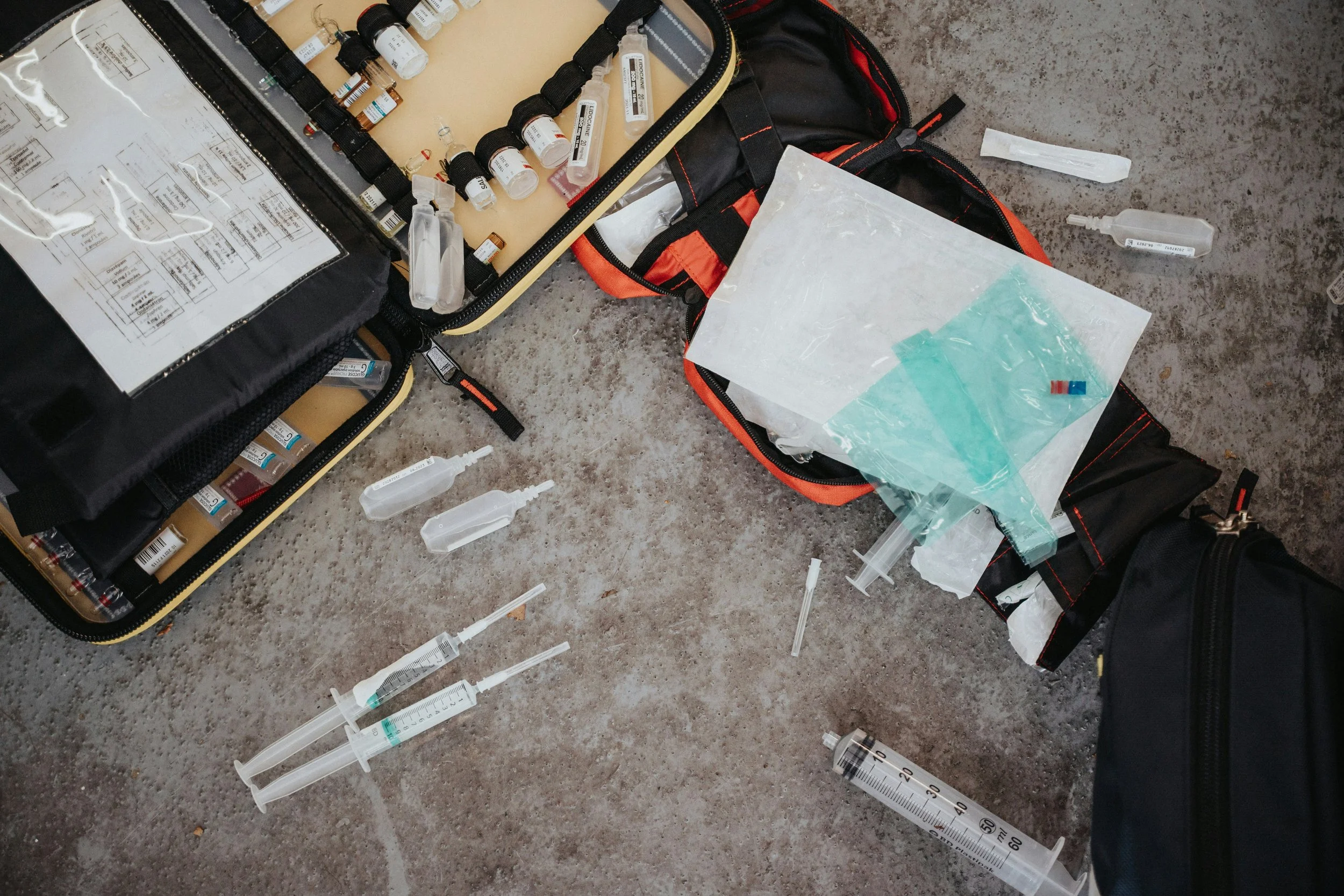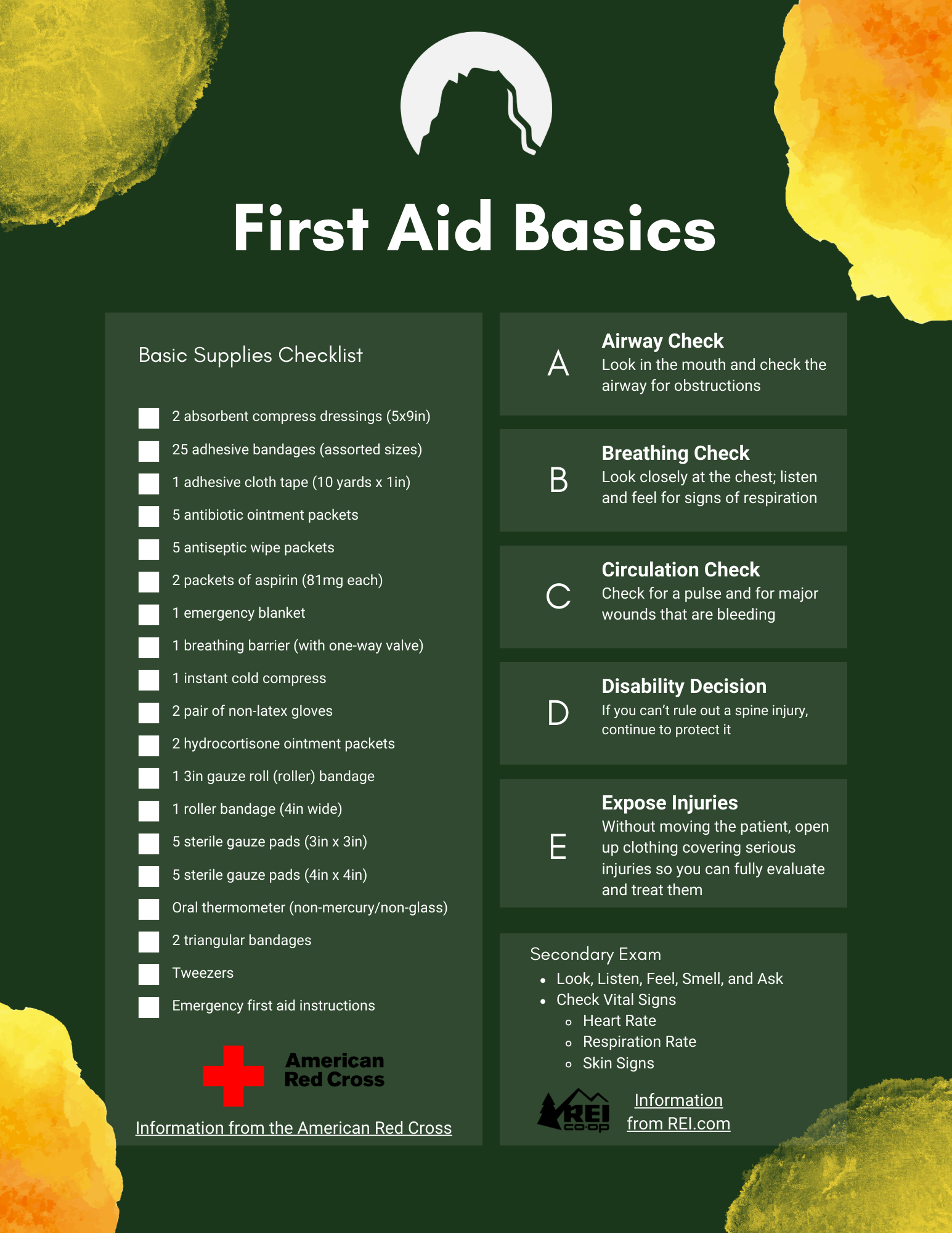First Thing’s First (First Aid)
When you’re out hiking, camping, climbing, fishing, or just generally traveling, have you thought about what happens when someone gets hurt? In most cases, you can still call 911, but there may be times when you are out of range of cell service or for paramedics to reach you.
Knowing the basics of wilderness first aid is important when adventuring outside. Having the right tools and skills can mean the difference between life and death, or very serious injury.
Remember: Safety is your responsibility. While the advice in this article can help you feel prepared, no article can replace the advice of trained physicians and professionals. Make sure you’re practicing proper techniques and safety requirements before providing first aid.
In this Post…
What To Carry
Because you never know what might happen while exploring, keeping some form of first aid supplies on hand is best. The American Red Cross recommends these things to keep in your kit:
Absorbent compress dressings and adhesive bandages
Adhesive cloth tape
Antibiotic ointment packets and antiseptic wipe packets
Aspirin (81 mg each)
Emergency blanket
Breathing barrier (with one-way valve)
Instant cold compress
Pairs of nonlatex gloves
Hydrocortisone ointment packets
Gauze roll (roller) bandage and sterile gauze pads
Oral thermometer (non-mercury/non-glass)
Triangular bandages
Tweezers
Emergency First Aid instructions
While this is a great set of basics to keep in a first aid kit, it is advisable to customize your kit to fit the needs and dangers that you may encounter. For example, long hikes may require that you pay special attention to blister care, or climbing may demand finger or arm splints. When traveling with little ones, consider child-safe medications and pain relievers.
It is also important to ensure you have any proper medications that you or others traveling with you may require. Any required allergy medications or response devices can be life-saving. It's always a good idea to have extra doses of any regularly taken medications because you never know when an emergency can call for extra days in the wilderness.
What To Do
The most important thing to remember in a wilderness first aid scenario is to keep calm. You will not be productive or effective if you are panicking. While assessing the scene, determine whether you will be safe before rushing to provide help.
If possible, evaluate what caused the injury. This may be easier if you are providing first aid to someone you are traveling with, but if you come upon someone on the trail who is injured, you want to ensure that you don’t get injured in the same way while trying to help.
If you are providing first aid to someone you weren’t traveling with, take time to examine the scene and assess the number of patients. There may be more people who need first aid that are not readily visible.
Once you have consent to treat, the next step is to complete an initial patient assessment. This takes the form of what REI and NOLS call the ABCDE exam.
Airway Check - Look in the mouth and check the airway for obstructions
Breathing Check - Look closely at the chest; listen and feel for signs of respiration
Circulation Check - Check for a pulse and for major wounds that are bleeding
Disability Decision - If you can’t rule out a spine injury, continue to protect it
Expose Injuries - Without moving the patient, open up clothing covering serious injuries so you can fully evaluate and treat them
When you have completed the initial exam and taken care of any factors that may put your patient in immediate danger, you can move on to a secondary patient assessment.
A head-to-toe exam can help you make a treatment plan. It involves checking over the full body and making sure to look, listen, feel, and smell to see if anything is wrong, out of place, or unusual. Asking patients what hurts or if anything feels wrong is another method to help complete a secondary assessment.
Checking vital signs can help you determine if something is wrong and help the medical professionals who will eventually take over patient care. Measuring and keeping track of things like heart rate, respiration rate, and skin signs (skin color, temperature, and moisture) will be beneficial when those individuals arrive.
Ultimately, some form of training and certification will be most beneficial to learn what to do in emergency situations. Training courses will teach skills such as:
Spine and head injuries
Shock
Wounds and infections, burns and blisters
Bone and soft-tissue injuries
Heat exhaustion and heat stroke
And much more…
Resources To Learn More
There are many great resources to learn more about Wilderness First Aid, including training courses and certifications.
REI: Most of the information from this post came from REI’s website. They have a great article about Wilderness First Aid that goes more in depth into the basics covered here. REI also sells first aid supplies, kits, and books to help make sure you are wilderness ready.
NOLS: The National Outdoor Leadership School (NOLS) offers training and certifications in wilderness first aid, first responder, and EMT. They also have more resources on their website to help make sure that you are prepared for any situation that may arise.
American Red Cross: The American Red Cross is a great resource to learn more about safety basics. They have an article about disaster preparedness from making a first aid kit to making a disaster plan. The American Red Cross also offers training and certifications for things like first aid, CPR, swimming safety, and first responders.




